
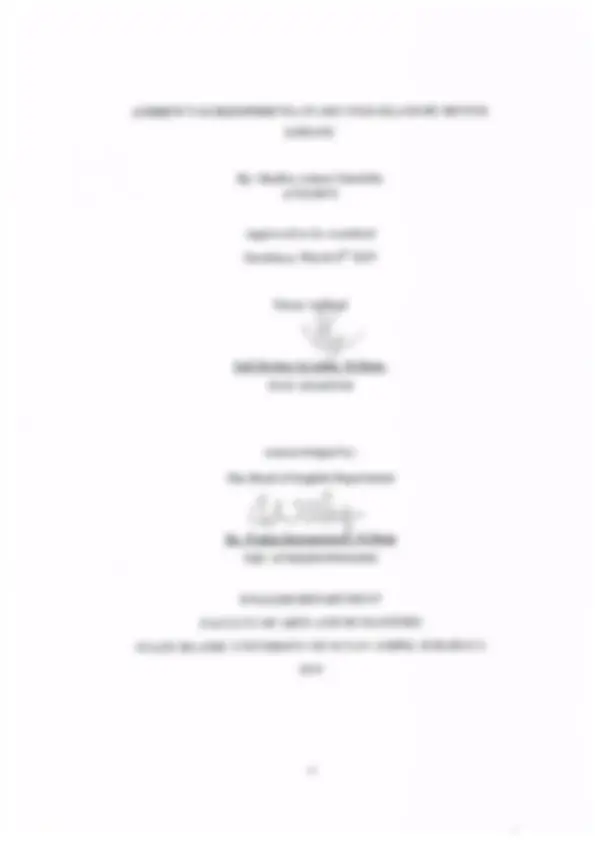
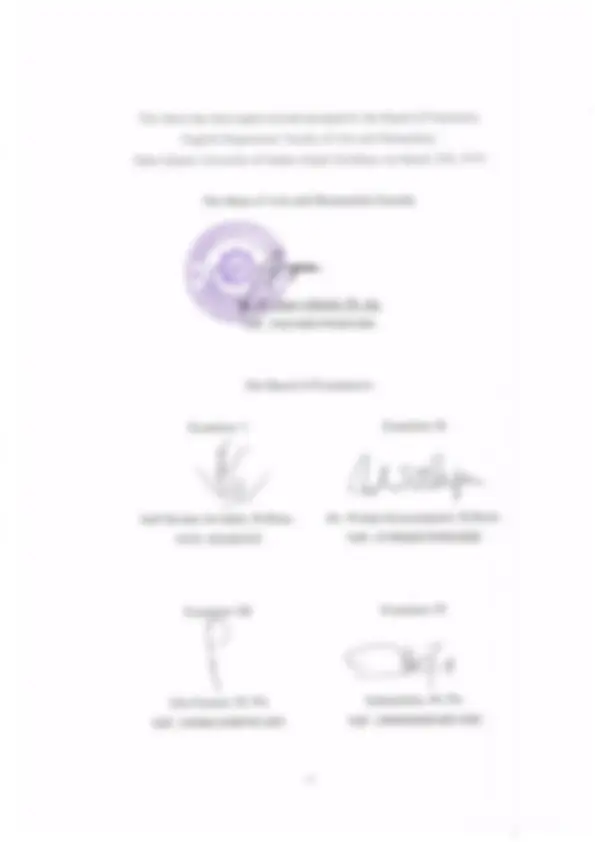
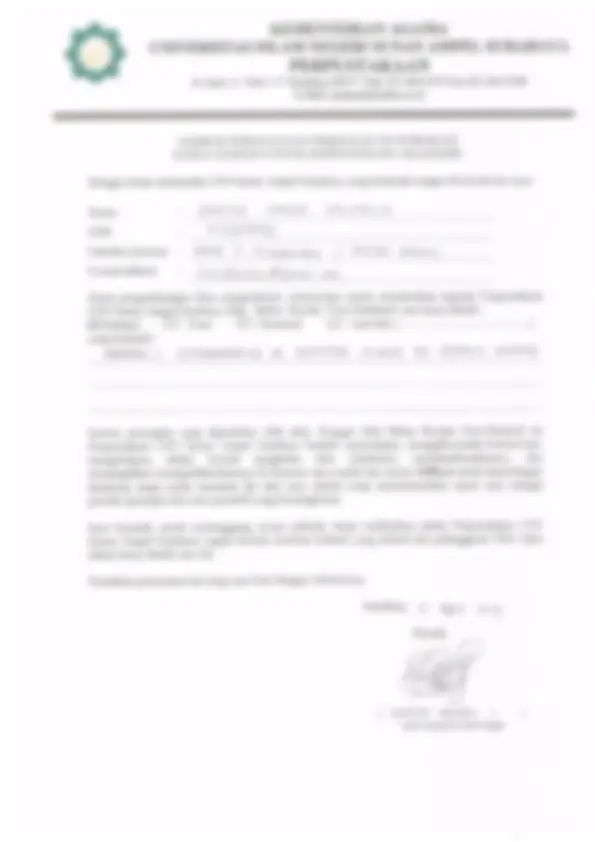
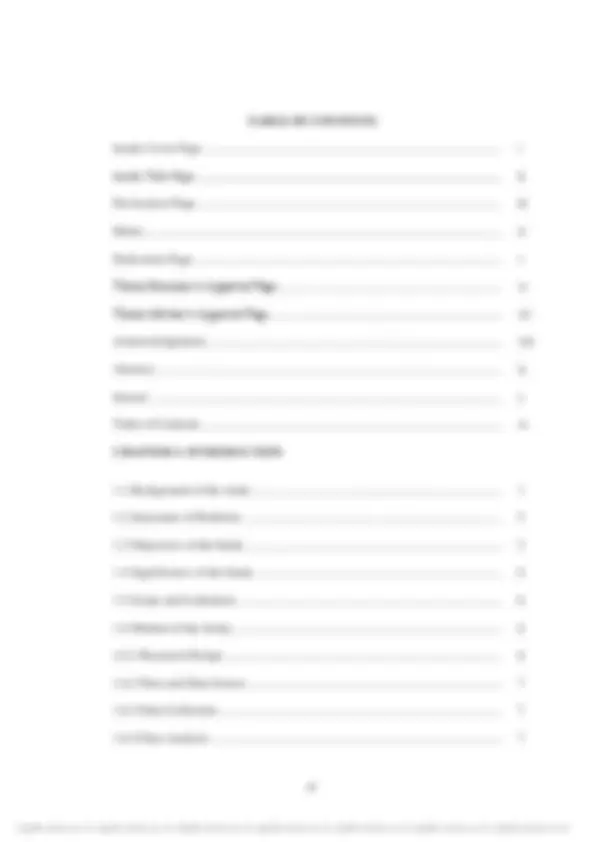
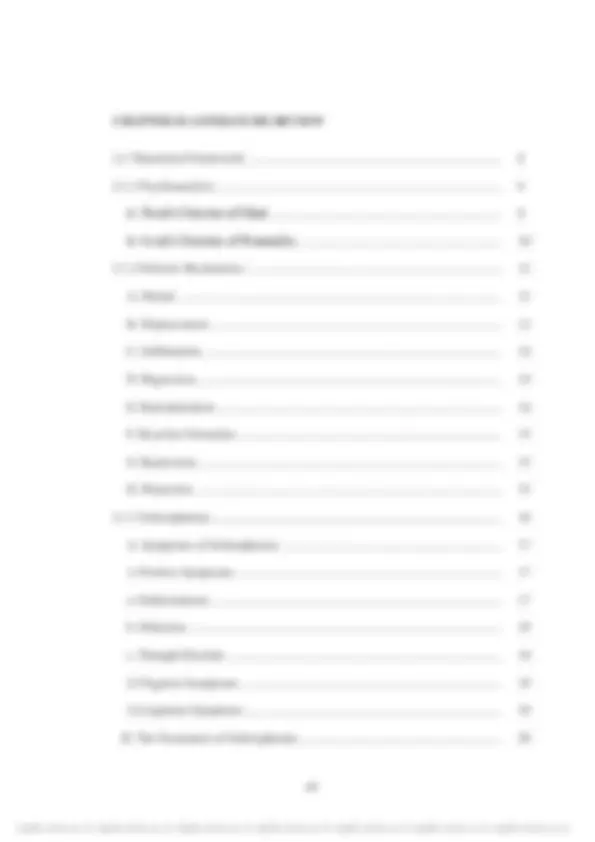
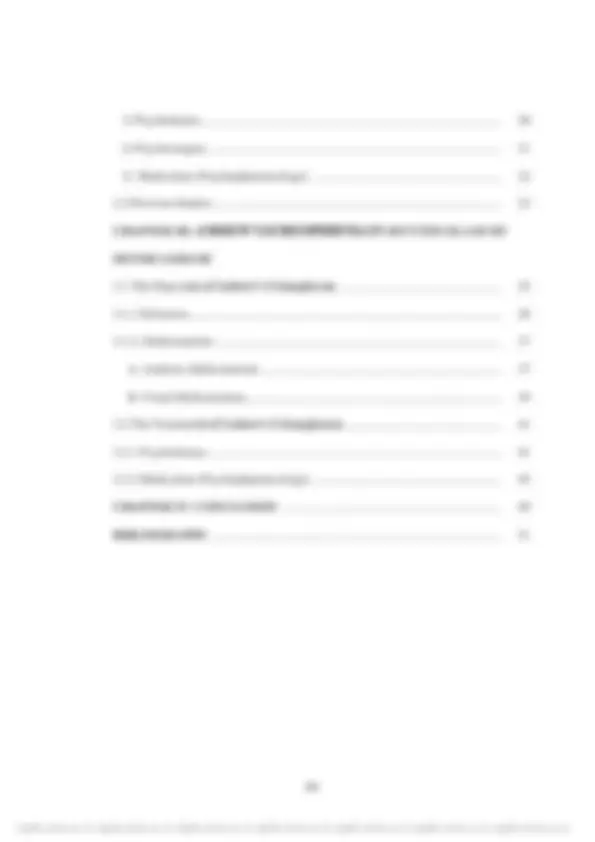
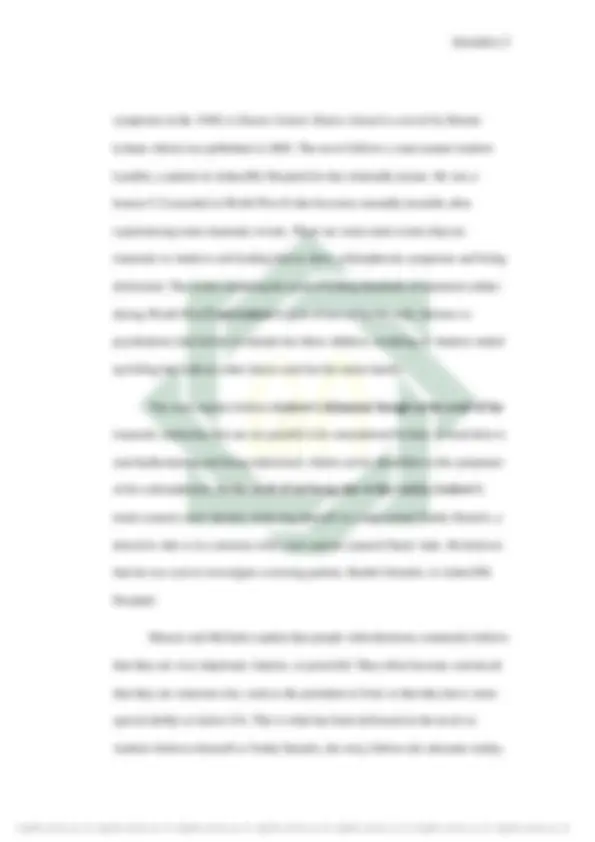
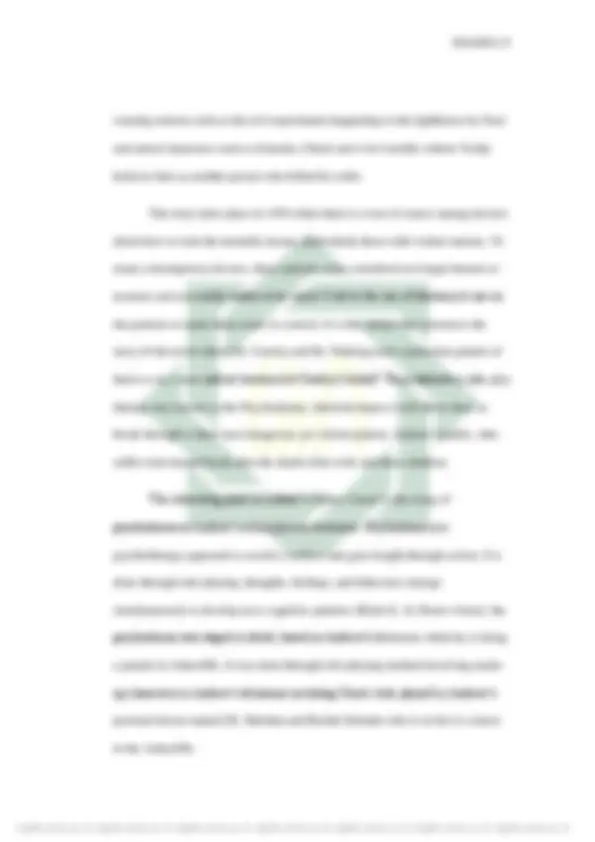
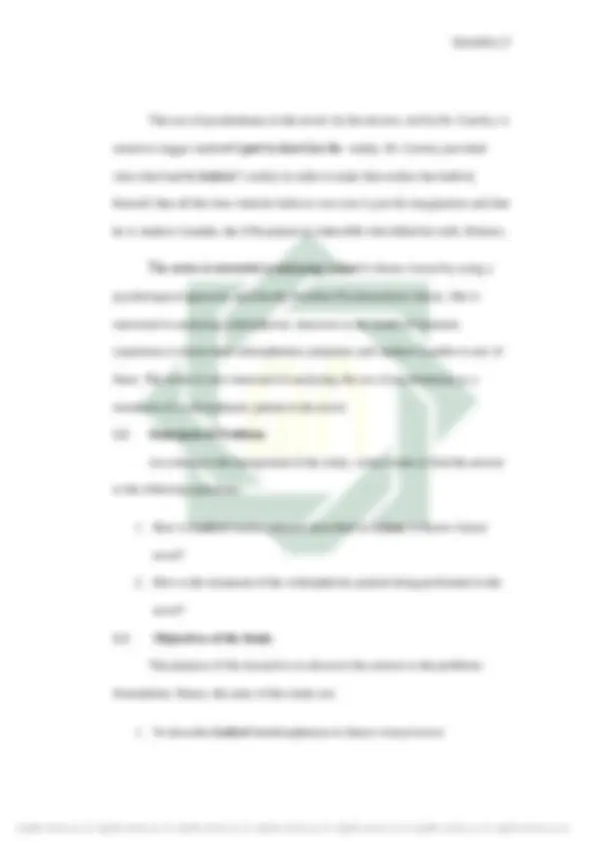
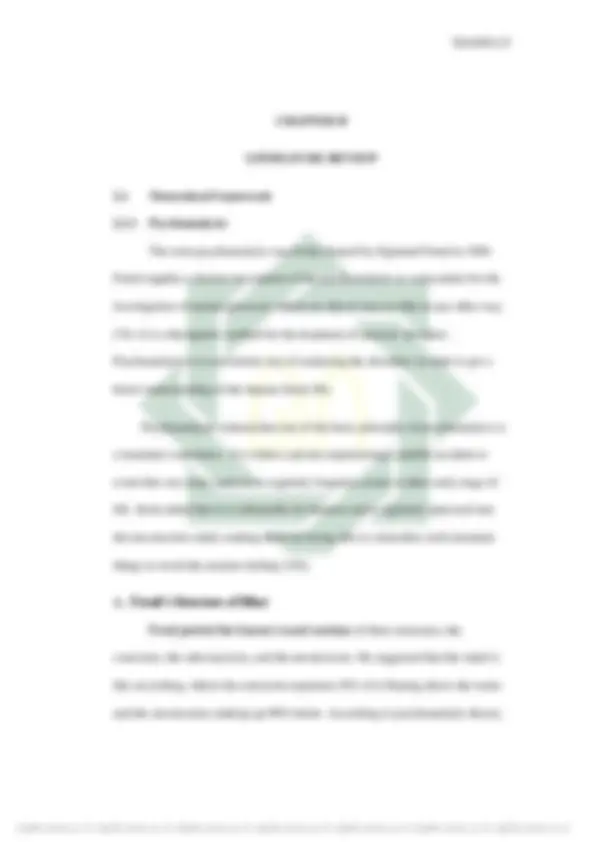

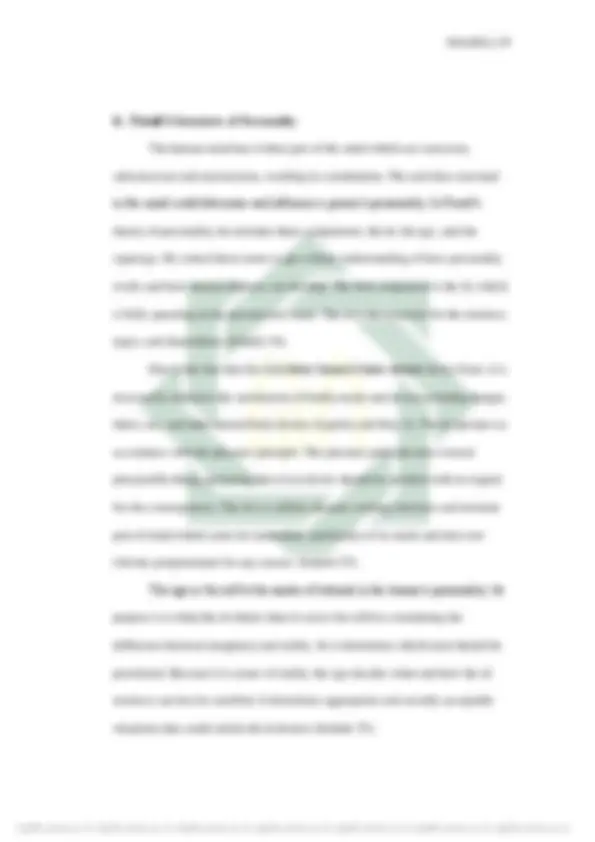
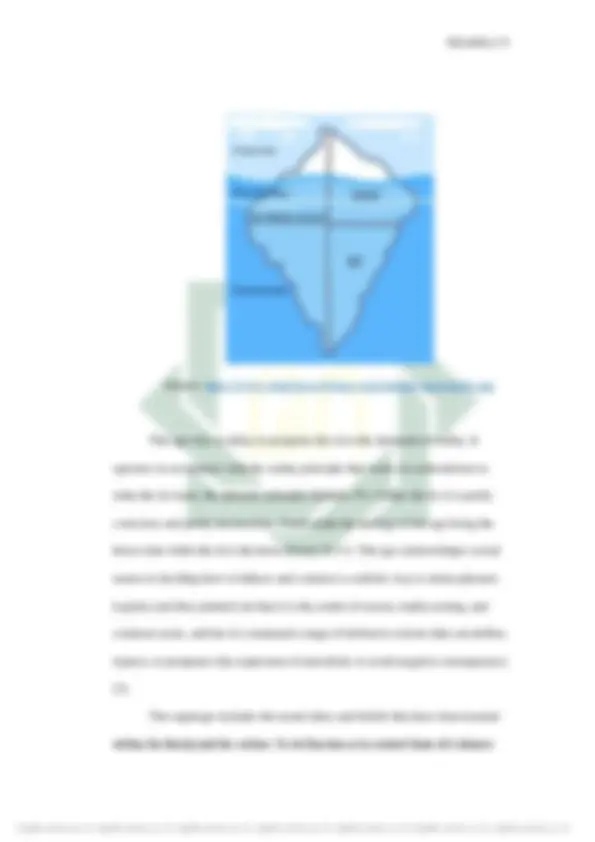
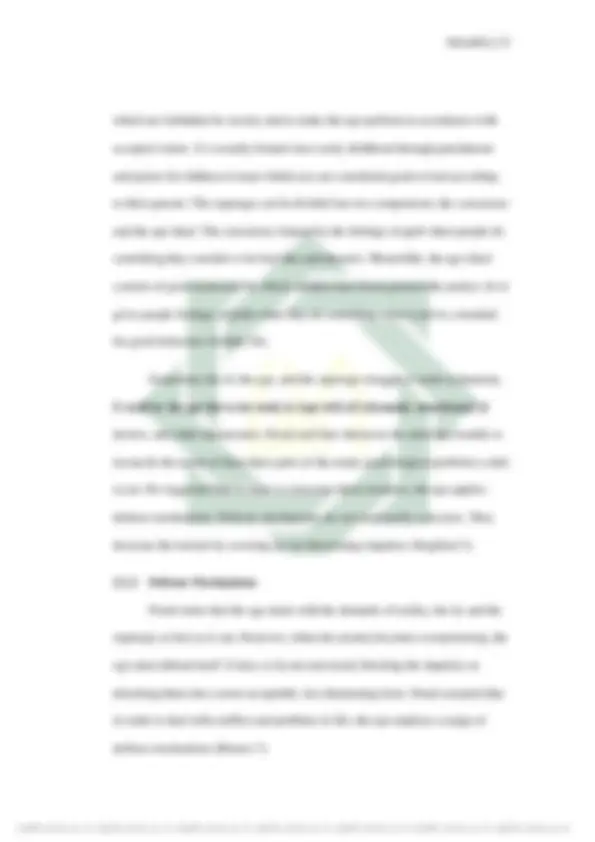
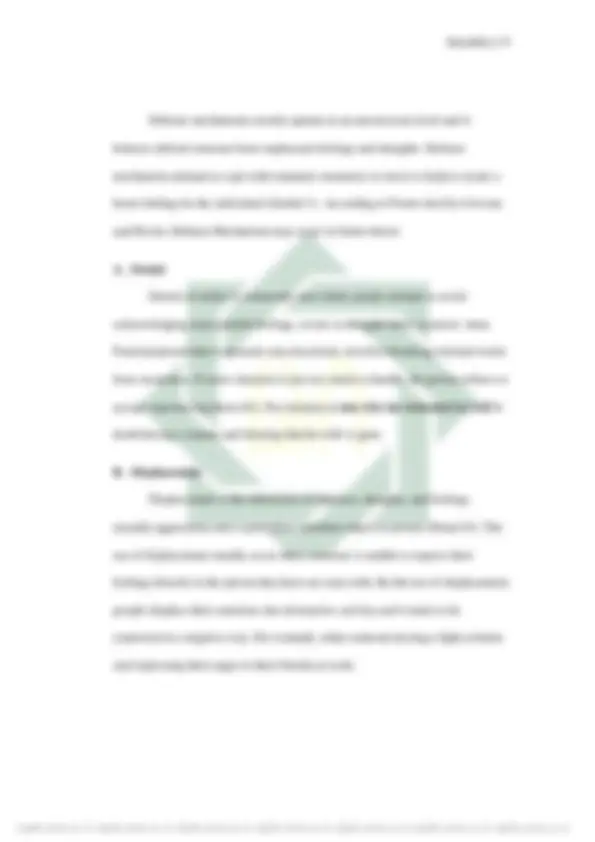
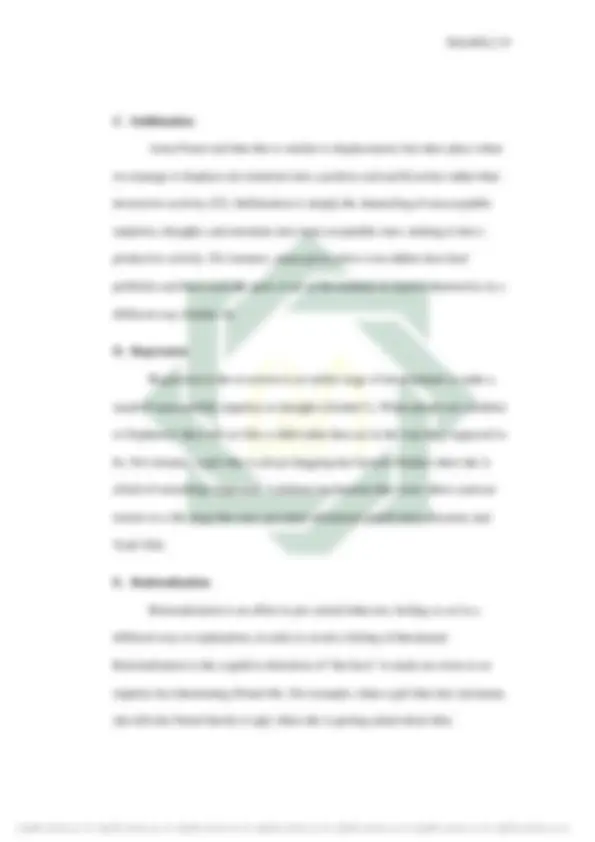
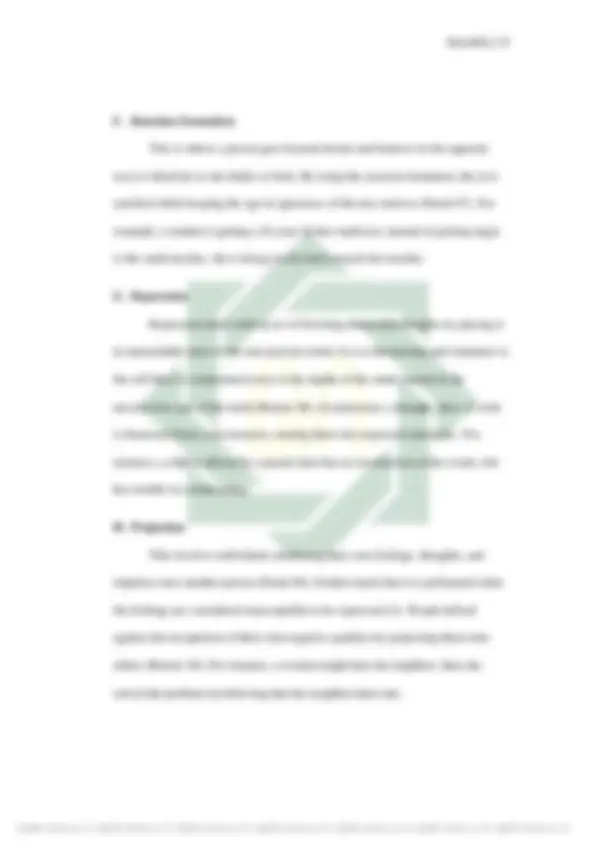
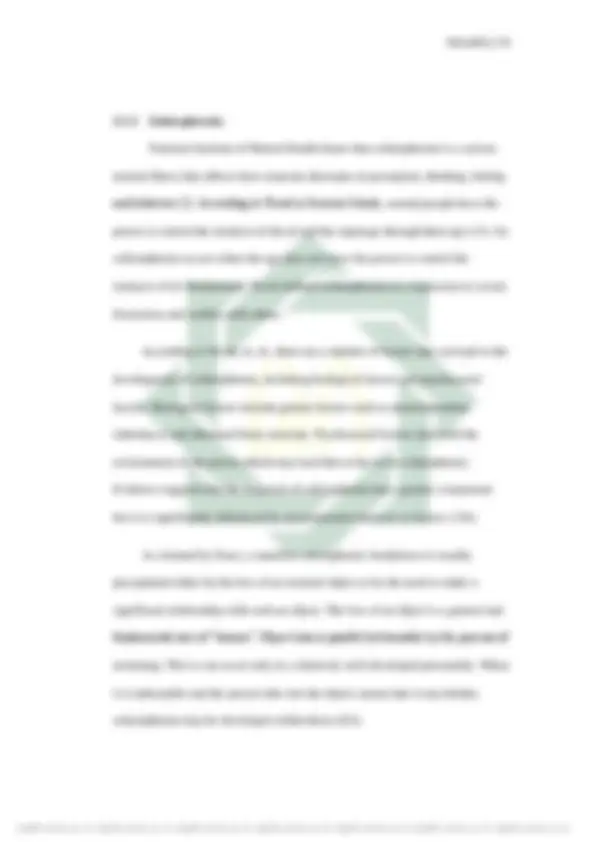
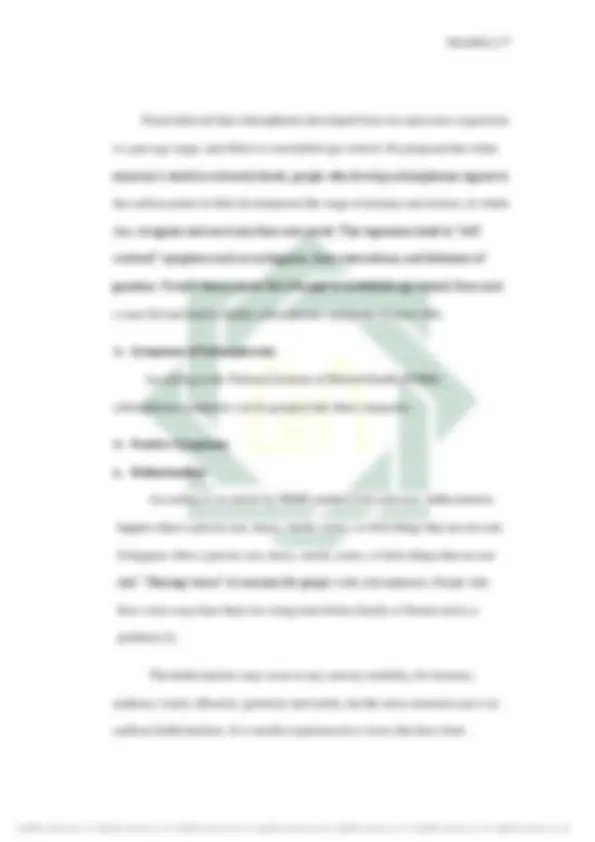


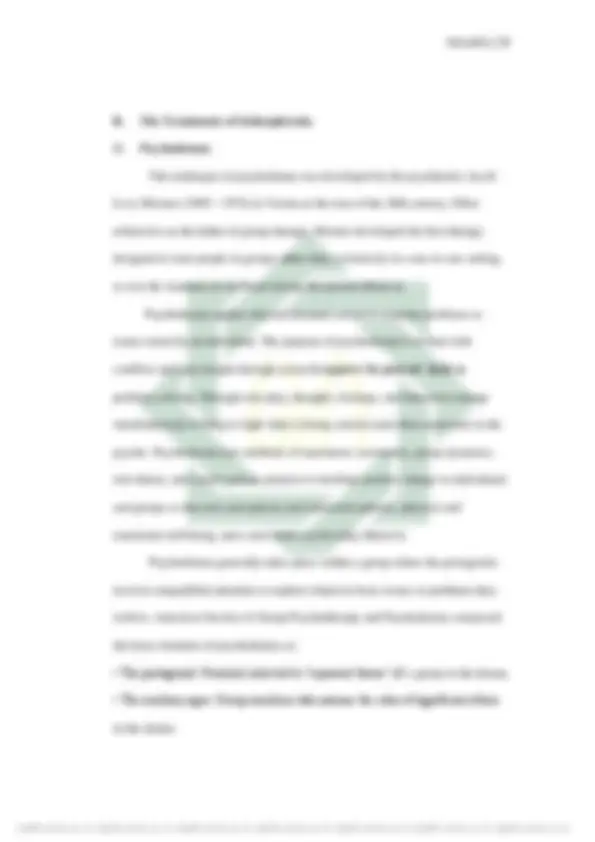
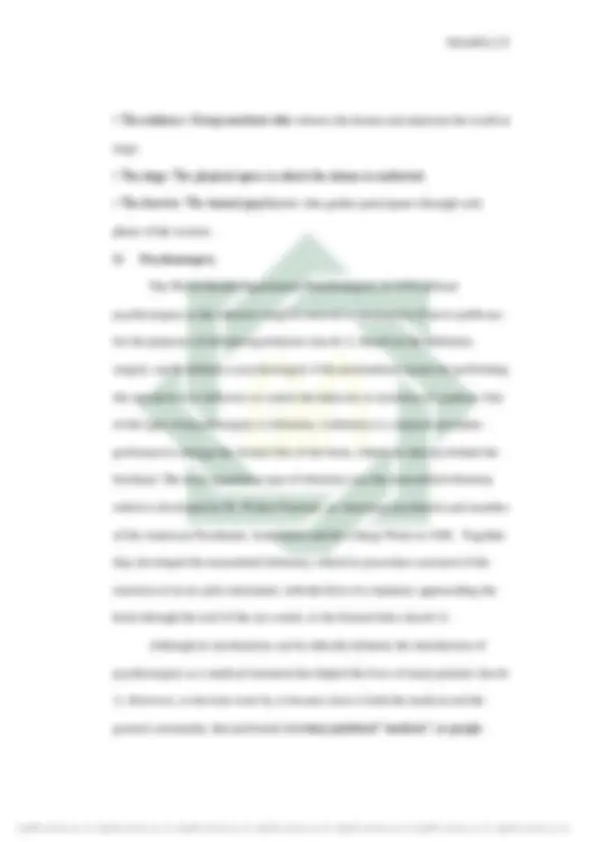
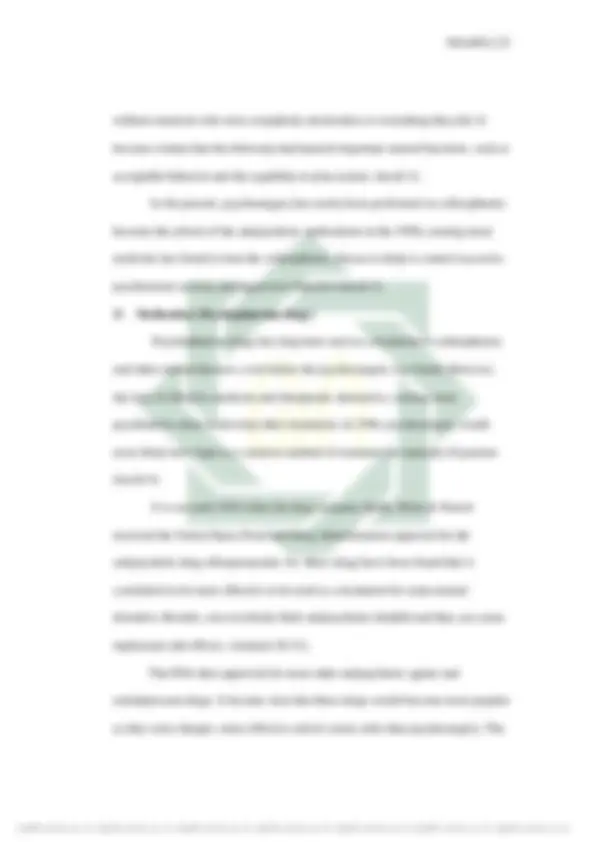
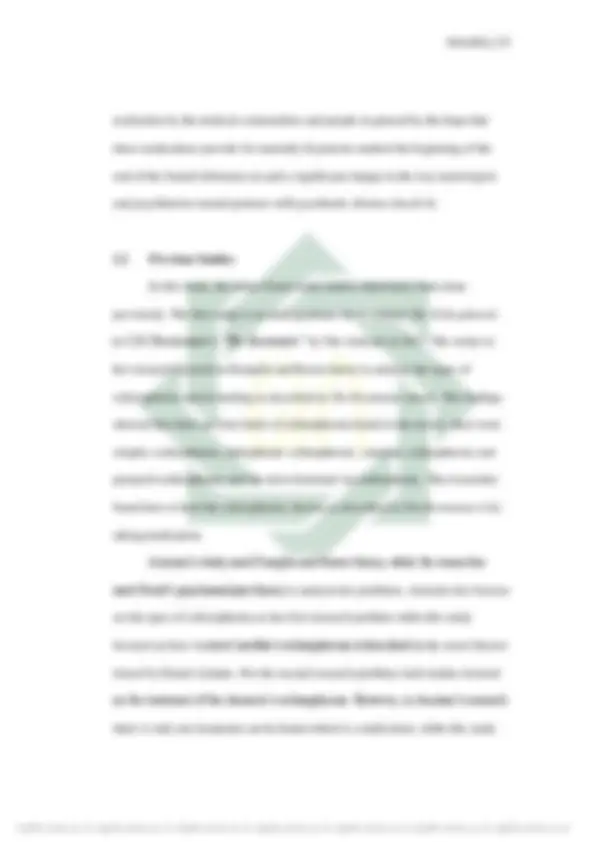
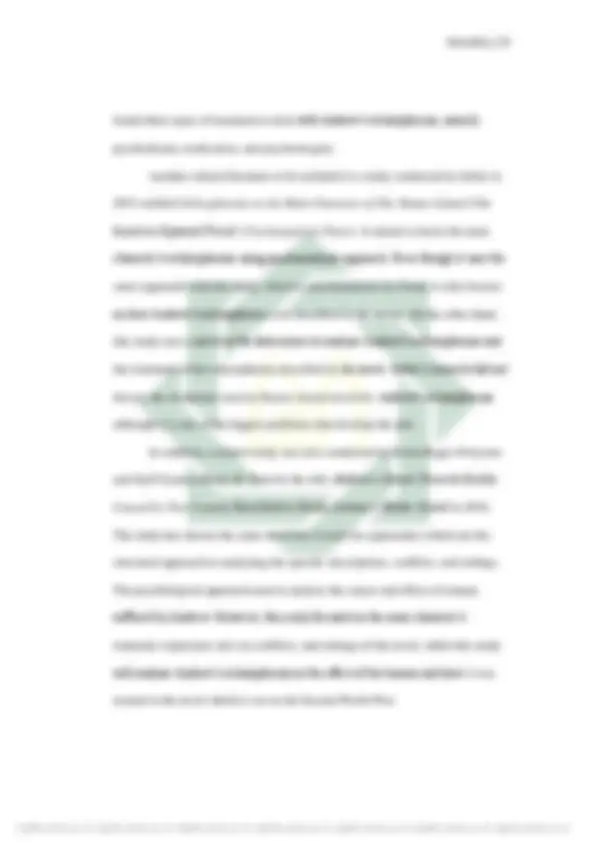
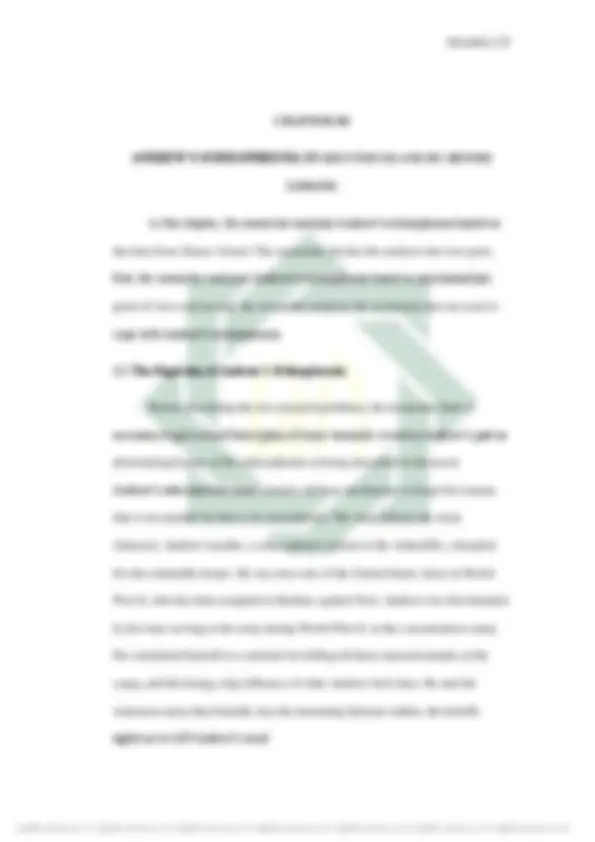
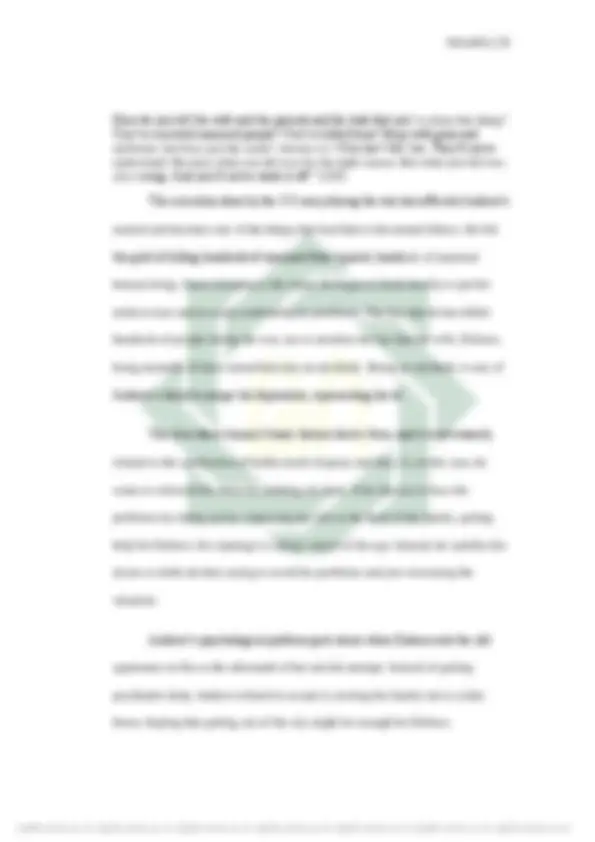
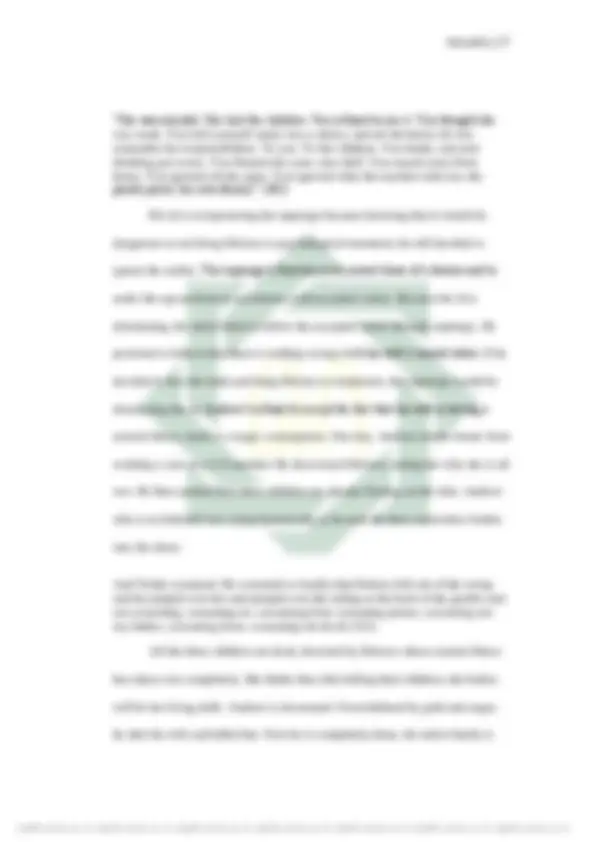

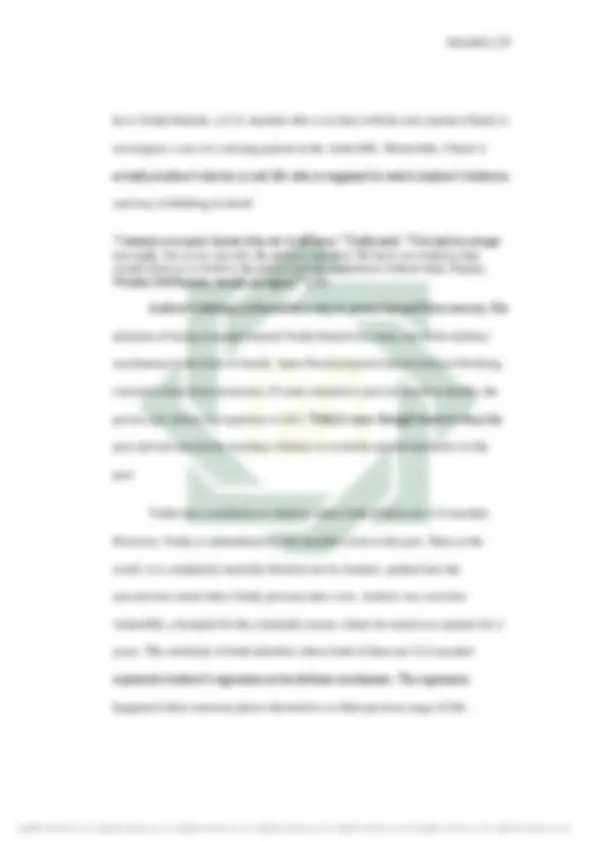

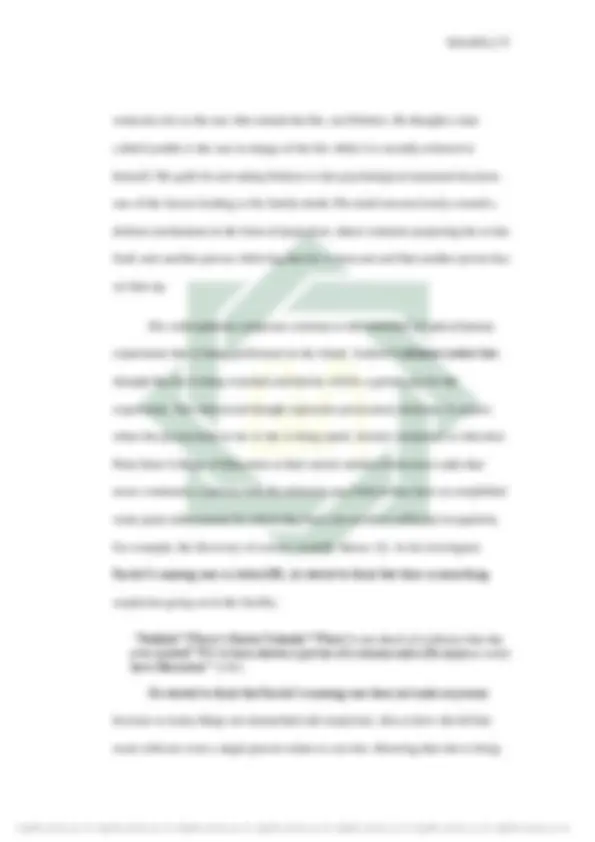
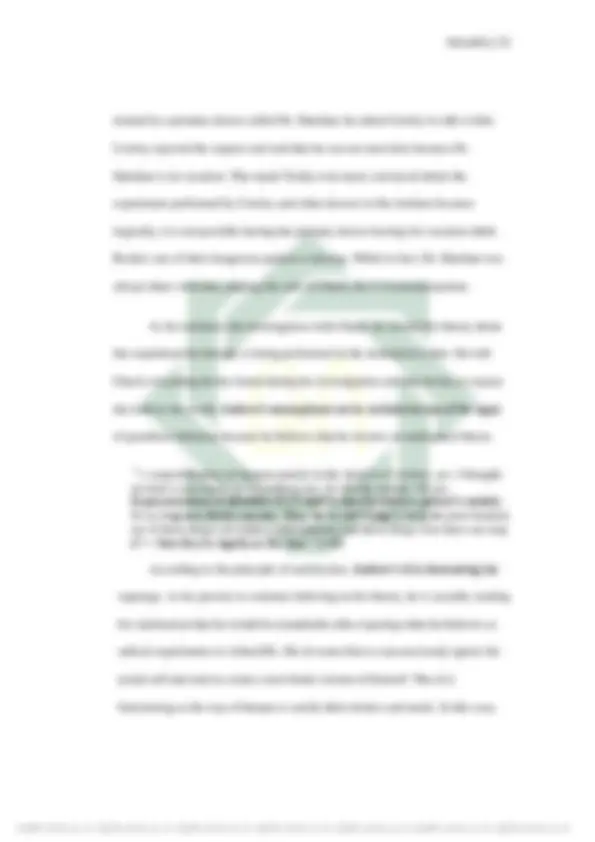
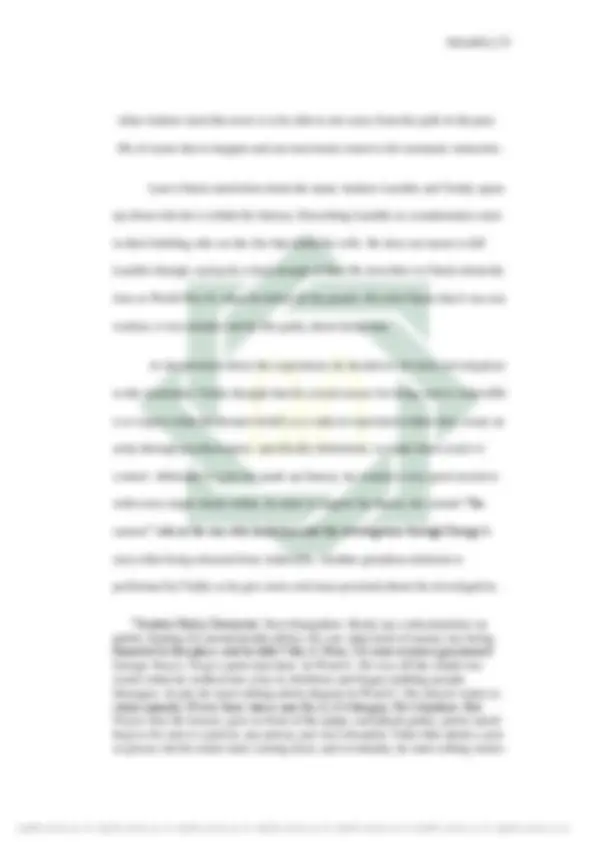
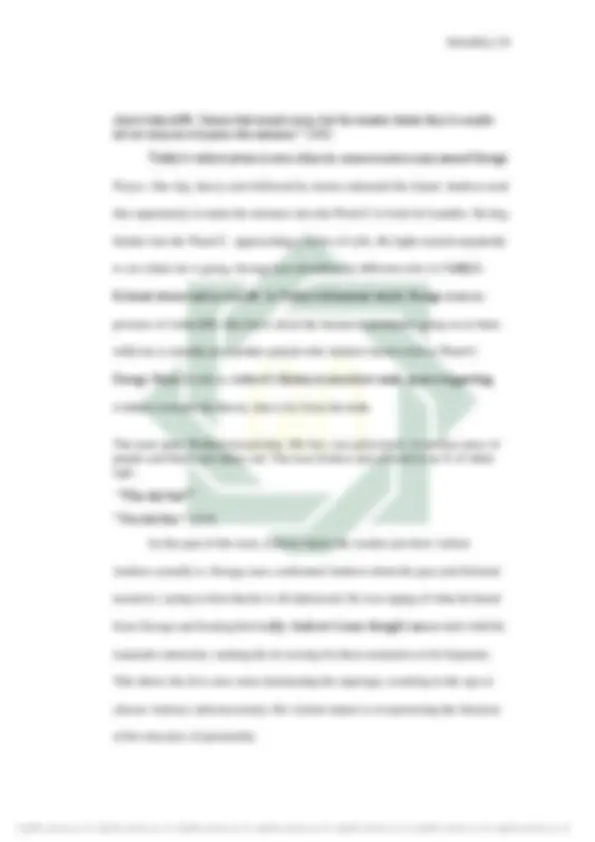
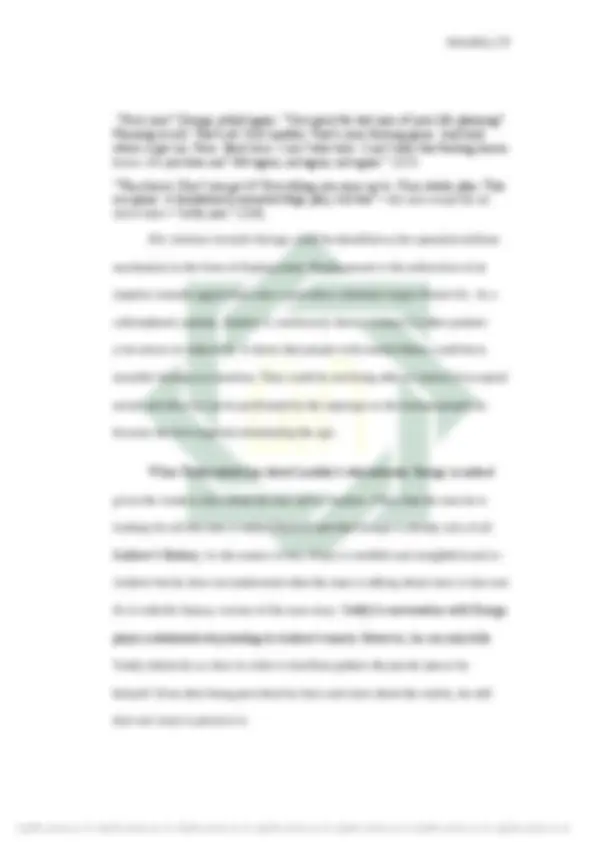
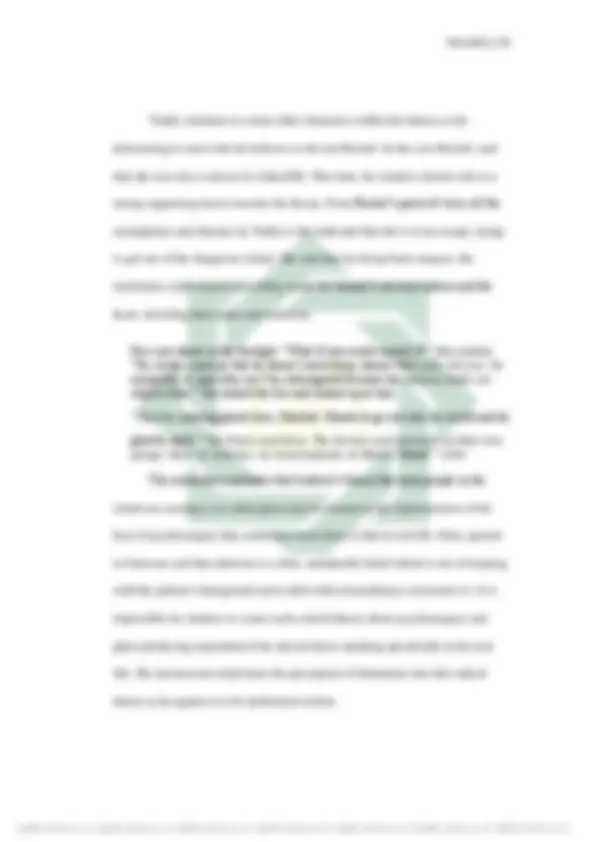
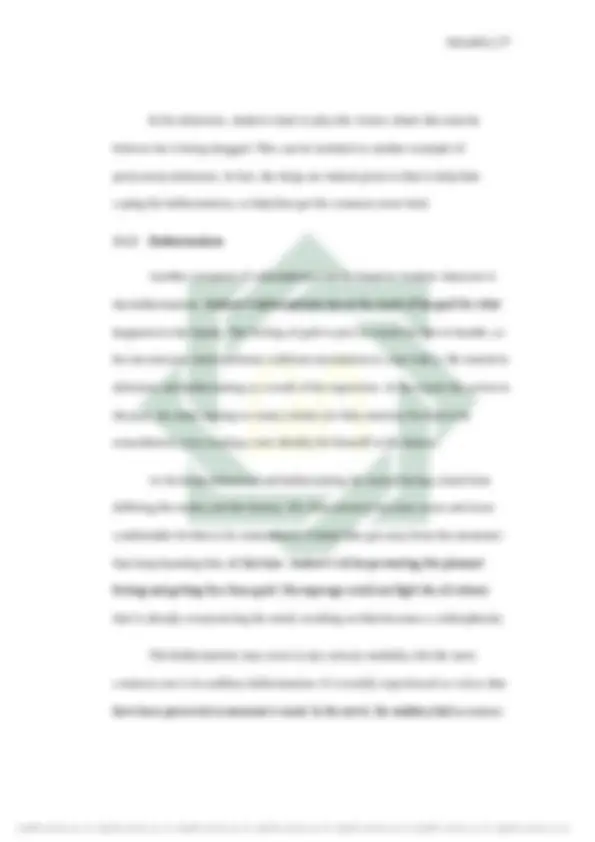

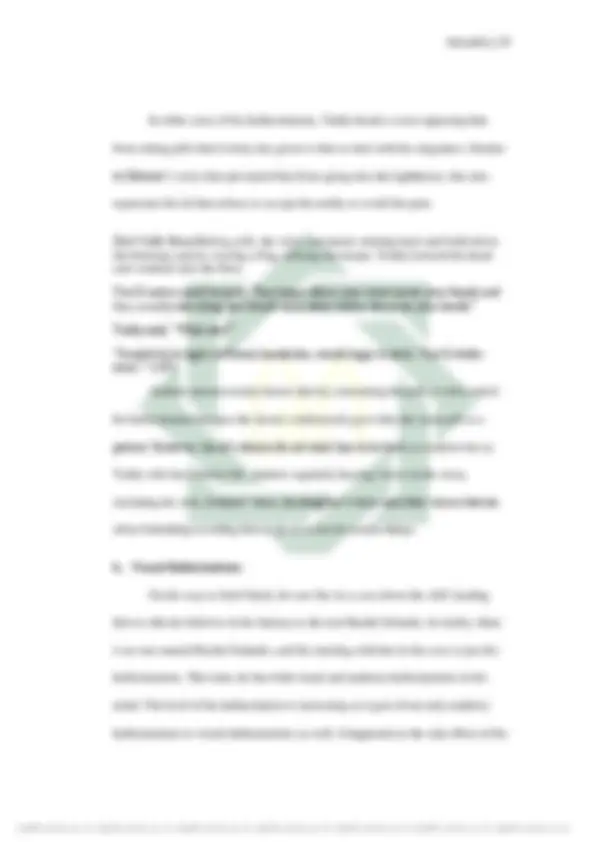
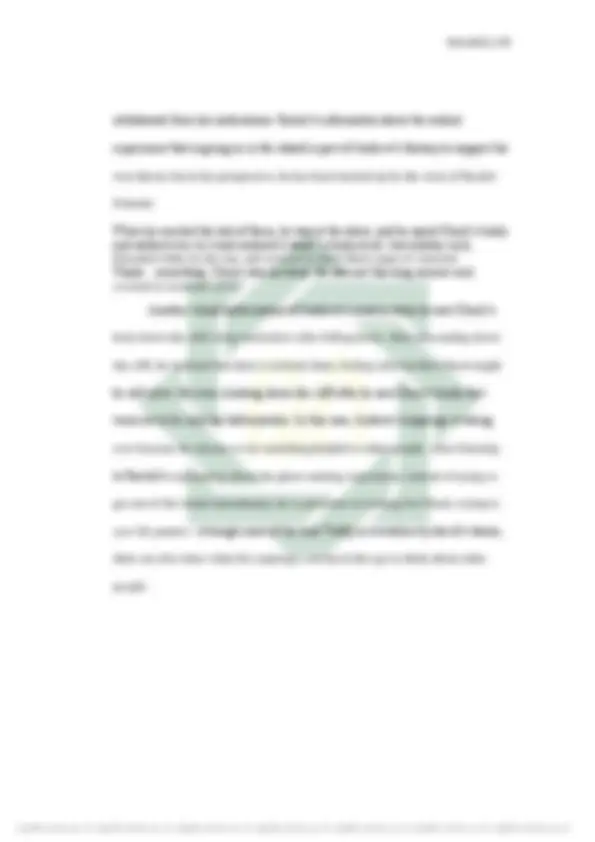
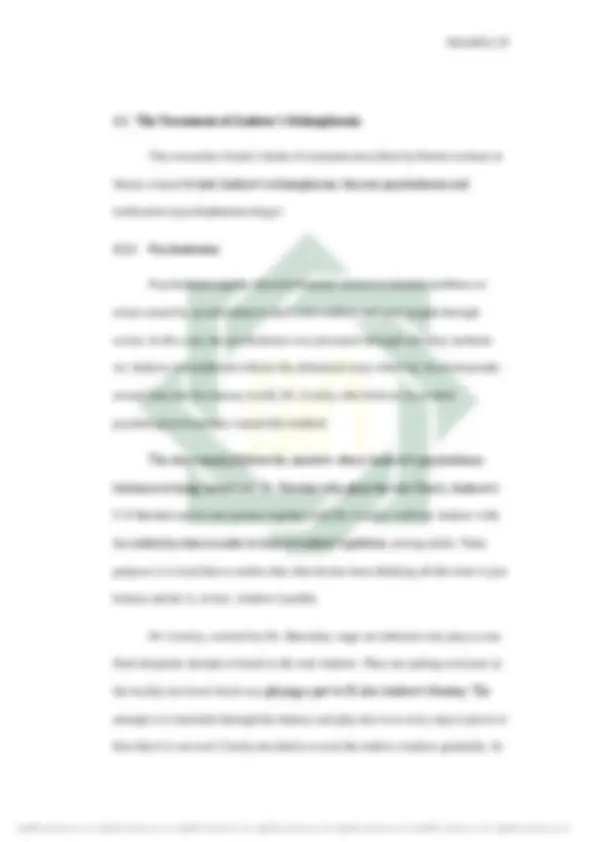
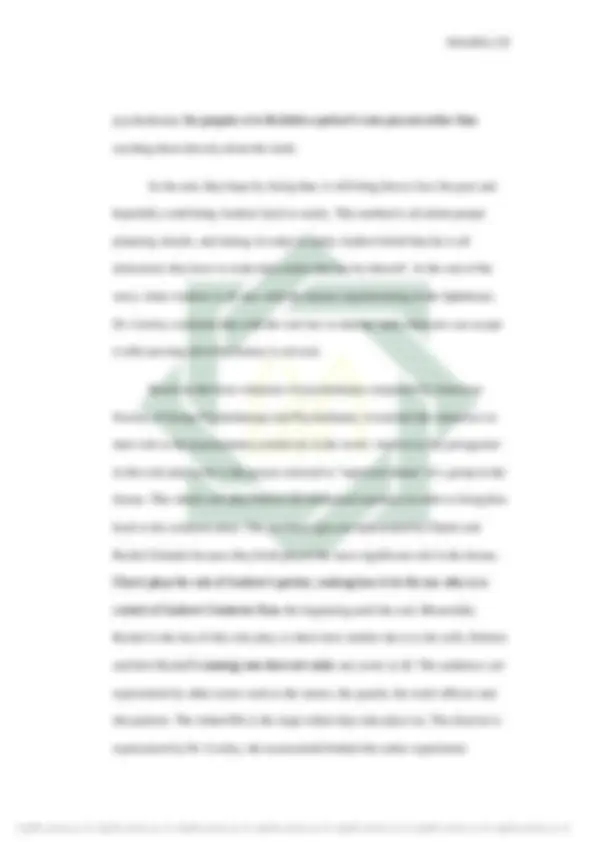
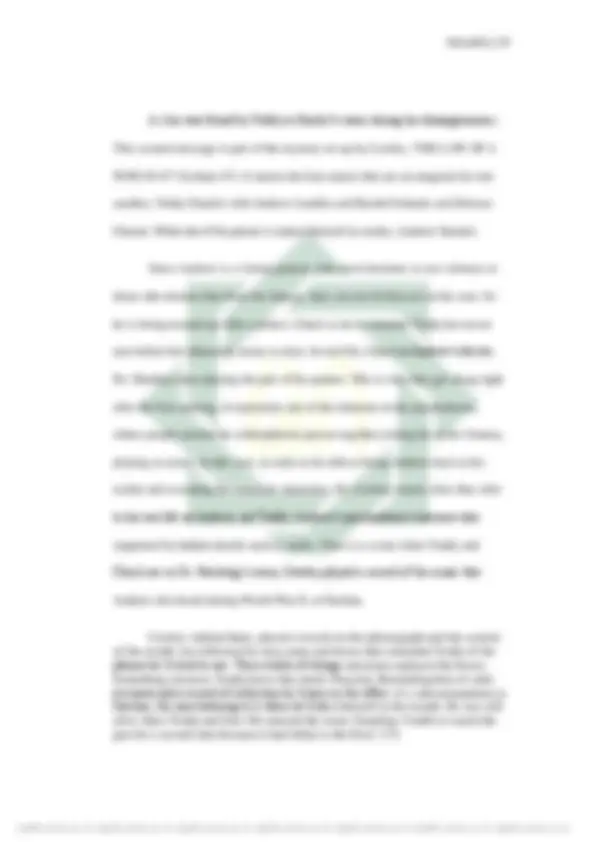
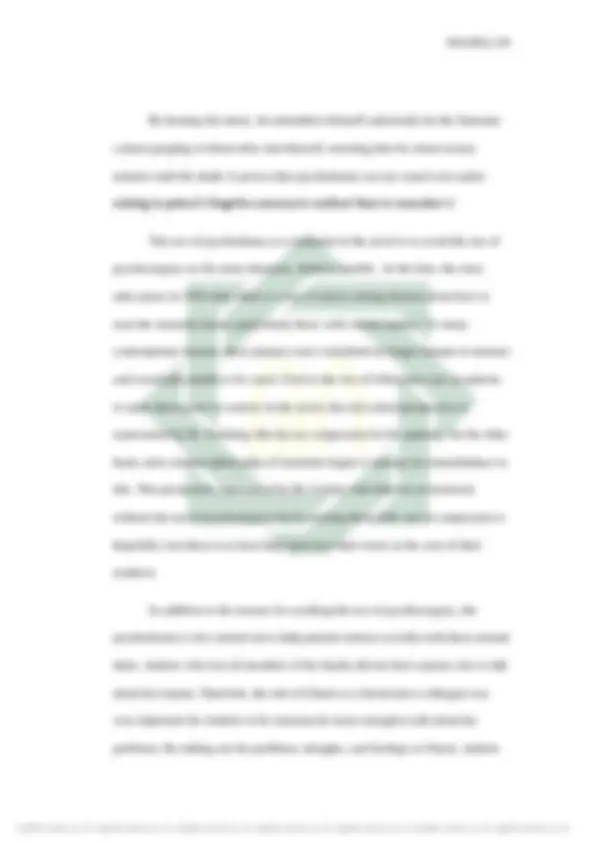
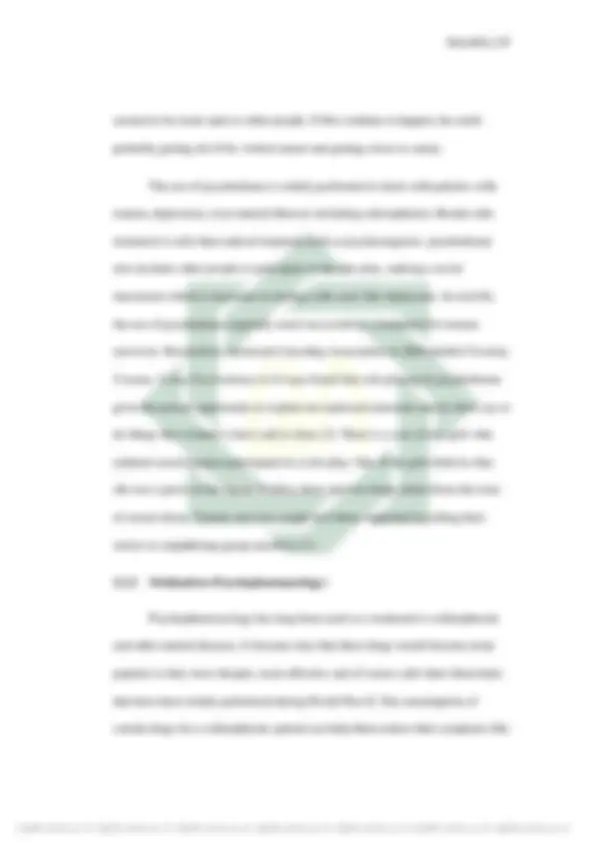
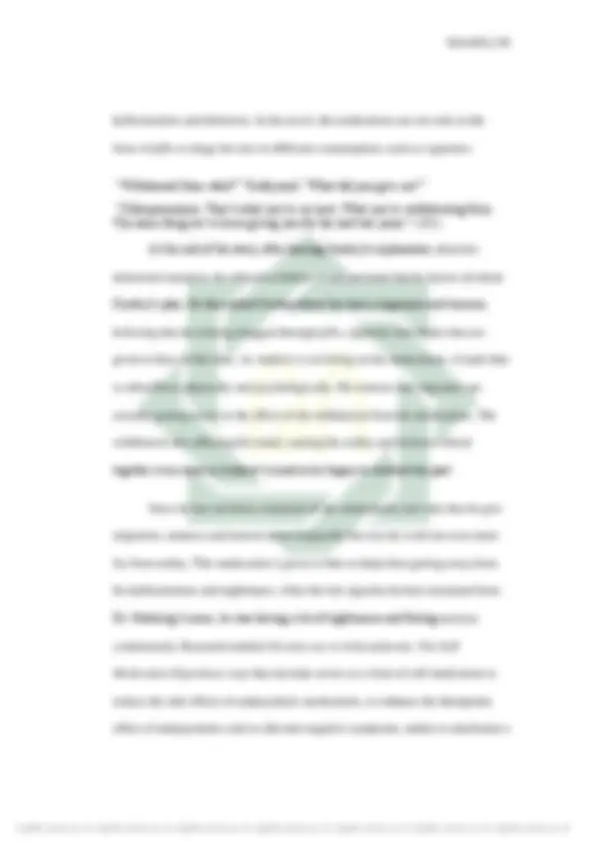
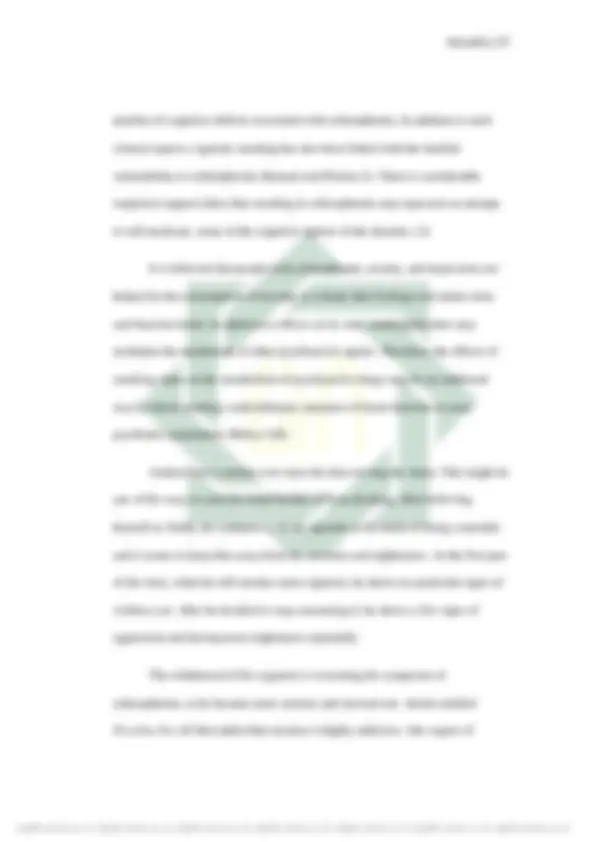

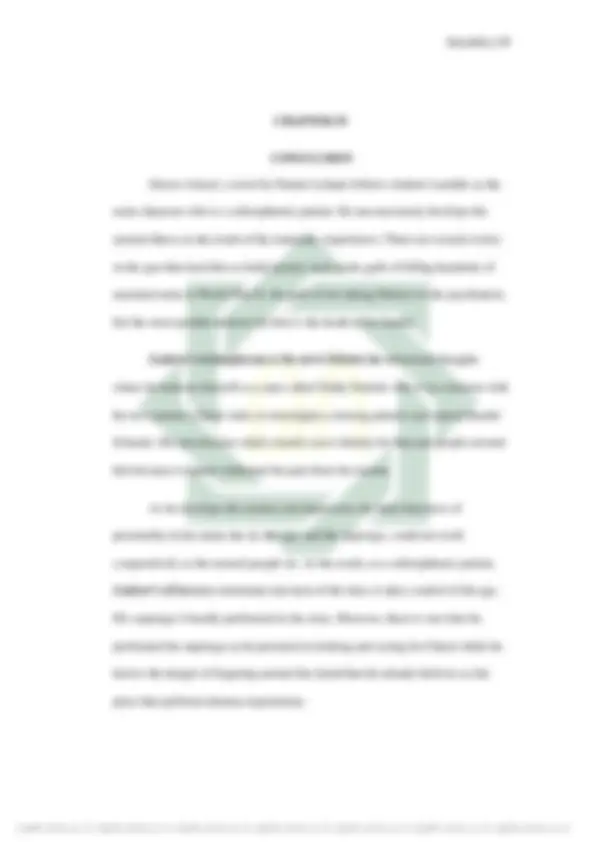
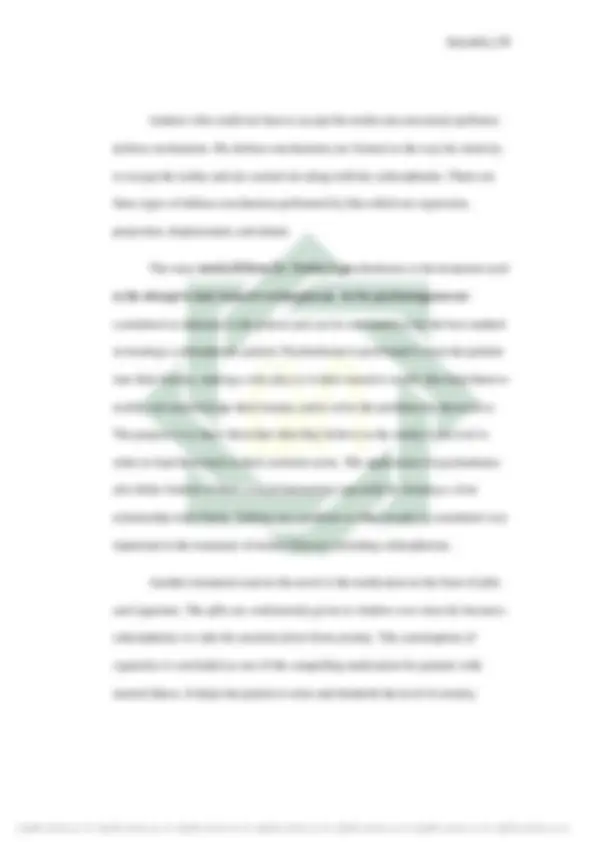


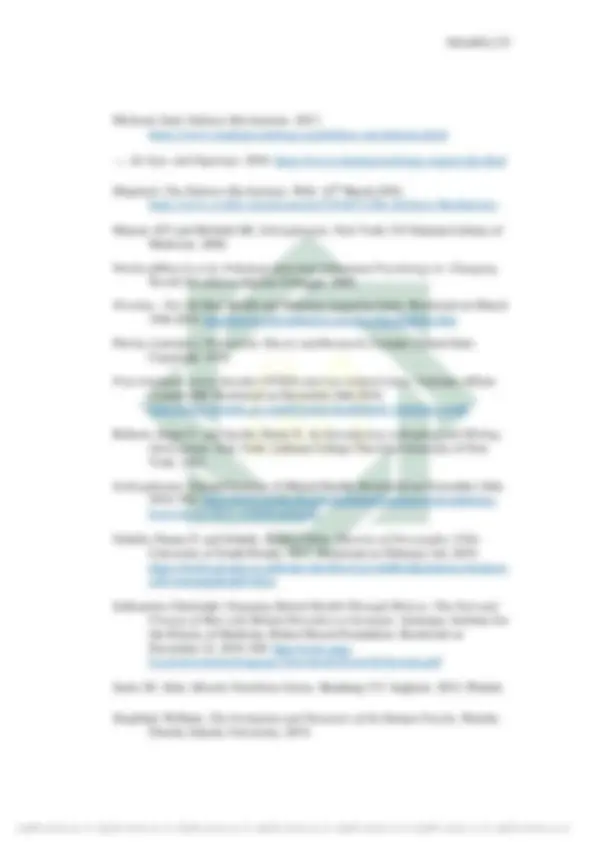



Study with the several resources on Docsity

Earn points by helping other students or get them with a premium plan


Prepare for your exams
Study with the several resources on Docsity

Earn points to download
Earn points by helping other students or get them with a premium plan
Community
Ask the community for help and clear up your study doubts
Discover the best universities in your country according to Docsity users
Free resources
Download our free guides on studying techniques, anxiety management strategies, and thesis advice from Docsity tutors
Andrews schizophrenia in shutter island by Dennis lehane from Sunan Ampel State islamic university surabaya.
Typology: Thesis
1 / 64

This page cannot be seen from the preview
Don't miss anything!

























































Submitted as Partial Fulfillment of the Requirements for the Bachelor Degree of English Department Faculty of Arts and Humanities, Sunan Ampel Surabaya University
By: Shafira Azhari Salsabila Reg. Number: A
ii
vii
viii
x
Salsabila, Shafira Azhari. 2019. Andrew’s Schizophrenia in Shutter Island by Dennis Lehane. Sastra Inggris. Fakultas Adab dan Humaniora. Universitas Islam Negeri Sunan Ampel Surabaya. Dosen Pembimbing : Sufi Ikrima Sa’adah, M.Hum. Kata Kunci : Psychoanalysis, Schizophrenia, Defense Mechanism.
Penelitian ini membahas skizofrenia yang diderita Andrew, tokoh utama dalam novel Shutter Island karya Dennis Lehane dan penyembuhannya. Andrew diceritakan menderita skizofrenia karena beberapa peristiwa traumatis. Peristiwa- peristiwa tersebut adalah rasa bersalah Andrew setelah membunuh ratusan tentara tak bersenjata di Perang Dunia II, rasa bersalah Andrew karena tidak membawa istrinya, Dolores ke psikiater yang menjadi penyebab Dolores membunuh ketiga anaknya dan rasa bersalah Andrew yang terpaksa membunuh sang istri dan kehilangan seluruh anggota keluarganya. Kesedihan karena kematian keluarganya membuat Andrew depresi. Id (aspek kepripadian manusia yang terbentuk di alam bawah sadar) Andrew tidak dapat menerima rasa sakit untuk mengingat trauma tersebut dan secara tidak sadar membentuk mekanisme pertahanan agar dapat bebas dari rasa bersalah. Peneliti menerapkan teori psikoanalisis khususnya teori kepribadian dan mekanisme pertahanan oleh Freud untuk menganalisis skizofrenia yang diderita Andrew. Hasilnya menunjukkan bahwa sebagai pasien skizofrenia, id Andrew mendominasi cara kerja egonya, dimana superegonya hampir tidak ditunjukkan di dalam cerita. Dalam novel, Andrew menunjukkan tiga jenis mekanisme pertahanan yaitu penyangkalan, proyeksi, regresi, dan pengalihan. Sementara itu, ada dua metode perawatan yang dilakukan oleh psikiater di Ashecliffe untuk menangani skizofrenia yang dialami Andrew seperti psikodrama dan obat-obatan.
xi
Inside Cover Page ................................................................................................... i Inside Title Page ...................................................................................................... ii Declaration Page ..................................................................................................... iii Motto ....................................................................................................................... iv Dedication Page ...................................................................................................... v Thesis Examiner’s Approval Page .......................................................................... vi Thesis Advisor’s Approval Page ............................................................................. vii Acknowledgement................................................................................................... viii Abstract ................................................................................................................... ix Intisari ..................................................................................................................... x Table of Contents ................................................................................................... xi CHAPTER I: INTRODUCTION
1.1 Background of the study ................................................................................... 1 1.2 Statement of Problems ...................................................................................... 5 1.3 Objectives of the Study ..................................................................................... 5 1.4 Significance of the Study .................................................................................. 6 1.5 Scope and Limitation ........................................................................................ 6 1.6 Method of the Study .......................................................................................... 6 1.6.1 Research Design ............................................................................................. 6 1.6.2 Data and Data Source ..................................................................................... 7 1.6.3 Data Collection............................................................................................... 7 1.6.4 Data Analysis ................................................................................................. 7
Salsabila | 1
1.1 Background of the Study In their life, people can experience shocking events. These events can make people suffer psychologically, leading them to gain trauma. Trauma appears when people having certain emotional injuries. Corsini’s definition of trauma quoted in a journal of the University of Pretoria is the result of a painful event, physical or mental, causing immediate damage to the body or shock to the mind. Psychological traumas include emotional shocks that have an enduring effect on personality (48).
However, the same painful event can be traumatic for one person but not for another, for instance, death can be traumatic for certain people, yet not for others. It is because every human has a distinct defense mechanism. A defense mechanism is human’s psychological mechanism to reduce unpleasing feeling or thought. In dealing with trauma, our defense mechanism tries to accept reality, considering it as memories that may naturally fade as time goes by. For some cases, the event is so much pain to accept, that may be the original cause of some psychological problem. Some people are struggling to overcome their trauma and end up having a mental disorder.
Trauma can occur in a life-threating situation and it is commonly experienced in war. In 1945, during World War II, a lot of people lost their family
Salsabila | 3
symptoms in the 1945s is Shutter Island. Shutter Island is a novel by Dennis Lehane which was published in 2003. The novel follows a man named Andrew Laeddis, a patient in Ashecliffe Hospital for the criminally insane. He was a former U.S marshal in World War II who becomes mentally unstable after experiencing some traumatic events. There are some main events that are traumatic to Andrew and leading him to show schizophrenia symptoms and being delusional. The events including his guilt of killing hundreds of unarmed soldier during World War II and Andrew’s guilt of not taking his wife, Dolores to psychiatrists that led her to murder her three children, resulting on Andrew ended up killing her with no other choice and lost his entire family.
The story mainly follows Andrew’s delusional thought as the result of his traumatic memories that are too painful to be remembered by him. It leads him to start hallucinating and being delusional, which can be identified as the symptoms of his schizophrenia. As the result of not being able to face reality, Andrew’s mind created a new identity, believing himself as a man named Teddy Daniels, a detective who is in a mission with a new partner named Chuck Aule. He believes that he was sent to investigate a missing patient, Rachel Solando, in Ashecliffe Hospital.
Mueser and McGurk explain that people with delusions commonly believe that they are very important, famous, or powerful. They often become convinced that they are someone else, such as the president or God, or that they have some special ability or talent (14). This is what has been delivered in the novel as Andrew believes himself as Teddy Daniels, the story follows his alternate reality,
Salsabila | 4
creating notions such as the evil experiments happening in the lighthouse by Nazi and unreal characters such as Solando, Chuck and even Laeddis (whom Teddy believes him as another person who killed his wife).
The story takes place in 1954 when there is a war of source among doctors about how to treat the mentally insane, particularly those with violent natures. To many contemporary doctors, these patients were considered no longer human or monster and essentially unable to be cured. It led to the rise of lobotomy’s use on the patients to make them easier to control. It is this debate that constructs the story of the novel where Dr. Cawley and Dr. Nehring used a particular patient of theirs to try a new-radical treatment at Cawley’s behalf. They elaborate a role-play therapy also known as the Psychodrama, which he hopes it will allow them to break through to their most dangerous yet violent patient, Andrew Laeddis, who suffer total mental break after the death of his wife and three children.
The interesting point in Lehane’s Shutter Island is the using of psychodrama as Andrew’s schizophrenia treatment. Psychodrama is a psychotherapy approach to resolve conflicts and gain insight through action. It is done through role-playing, thoughts, feelings, and behaviors emerge simultaneously to develop new cognitive patterns (Klein 6). In Shutter Island, the psychodrama was staged in detail, based on Andrew’s delusions while he is being a patient in Ashecliffe. It was done through role-playing method involving made- up characters in Andrew’s delusions including Chuck Aule played by Andrew’s personal doctor named Dr. Sheehan and Rachel Solando who is in fact is a nurse in the Ashecliffe.
Salsabila | 6
Practically, the writer expects that this study would give insight about the symptoms of schizophrenia and its treatments. Besides, it shows Andrew’s schizophrenia as he suppresses his hurt and sadness which are relatable to most of the human’s problem in real life so it could encourage the readers to choose a positive way to face their problem to prevent any possibility of mental illness.
1.5 Scope and Limitation To avoid the vagueness, it is necessary to make a clear limitation for the study into a narrow scope, so the analysis can be specific and clearly understood. This study focuses on Andrew’s Schizophrenia and how is the treatment for his schizophrenia in Shutter Island novel by Dennis Lehane. Then, this study uses Freudian Psychoanalysis and Defense Mechanism in order to limit the analysis.
1.6 Method of the Study 1.6.1 Research Design
Salsabila | 7
The writer conducts the study by using a descriptive qualitative method. This research method is used to analyze Andrew’s Schizophrenia and its treatment, using Freudian Psychoanalysis theory.
1.6.2 Data and Data Source The primary data are from the novel Shutter Island by Dennis Lehane specifically sentences that represent Andrew’s schizophrenia. The secondary data are from the e-books, online resources, and journals that relate to the analysis. 1.6.3 Data Collection To analyze the data, the researcher uses some steps, including:
Salsabila | 9
most of what controls our behaviors, thoughts, and feelings are guided by the unconscious. The first level is the conscious mind, it includes our current thinking processes, it is a large part of our current awareness (Chalmers 3). Later, thoughts that are stored in the conscious mind may hold back and become unconscious thoughts. Ricoeur, quoted in Sousa, has stated that every thought in the human mind always placed in the conscious mind beforehand and later can be repressed by time, becoming the unconscious thoughts (2). The next level is the subconscious mind which includes those things of which we are aware but not taking into consideration. Miller and Neisser identify that in the subconscious, these thoughts and feelings are in a role to exert influence on our conscious awareness and actions to a certain extent but they have not disappeared. In the subconscious level, unconscious thoughts are latent but capable of becoming conscious because it is not being totally repressed (Balconi et al. 2). The unconscious is the third part of the mind divided by Freud. In this level of mind structure, the thought processes are out of our direct control. The unconscious mind thinks and acts independently from our conscious. If subconscious thoughts are still capable of becoming conscious, the unconscious thoughts are not being able to become conscious because it is being repressed (Freud 4).
Salsabila | 10
B. Freud’s Structure of Personality The human mind has it three part of the mind which are conscious, subconscious and unconscious, working in coordination. The activities executed in the mind could determine and influence a person’s personality. In Freud’s theory of personality, he includes three components, the id, the ego, and the superego. He coined these terms to get a better understanding of how personality works and how mental illnesses can develop. The first component is the id, which is fully operating in the unconscious mind. The id is the reservoir for the instincts, urges, and dispositions (Schultz 54). Due to the fact that the id is where human’s basic desires derive from, it is necessarily related to the satisfaction of bodily needs and drives including hunger, thirst, sex, and other natural body desires (Lapsley and Stey 2). The id operates in accordance with the pleasure principle. The pleasure principle aims toward pleasurable things, persisting that every desire should be satisfied with no regard for the consequences. The id is a selfish, pleasure-seeking structure and insistent part of mind which seeks for immediate satisfaction of its needs and does not tolerate postponement for any reason. (Schultz 55). The ego or the self is the master of rational in the human’s personality. Its purpose is to help the id obtain what it craves but still by considering the difference between imaginary and reality. So it determines which need should be prioritized. Because it is aware of reality, the ego decides when and how the id instincts can best be satisfied. It determines appropriate and socially acceptable situations that could satisfy the id desires (Schultz 55).